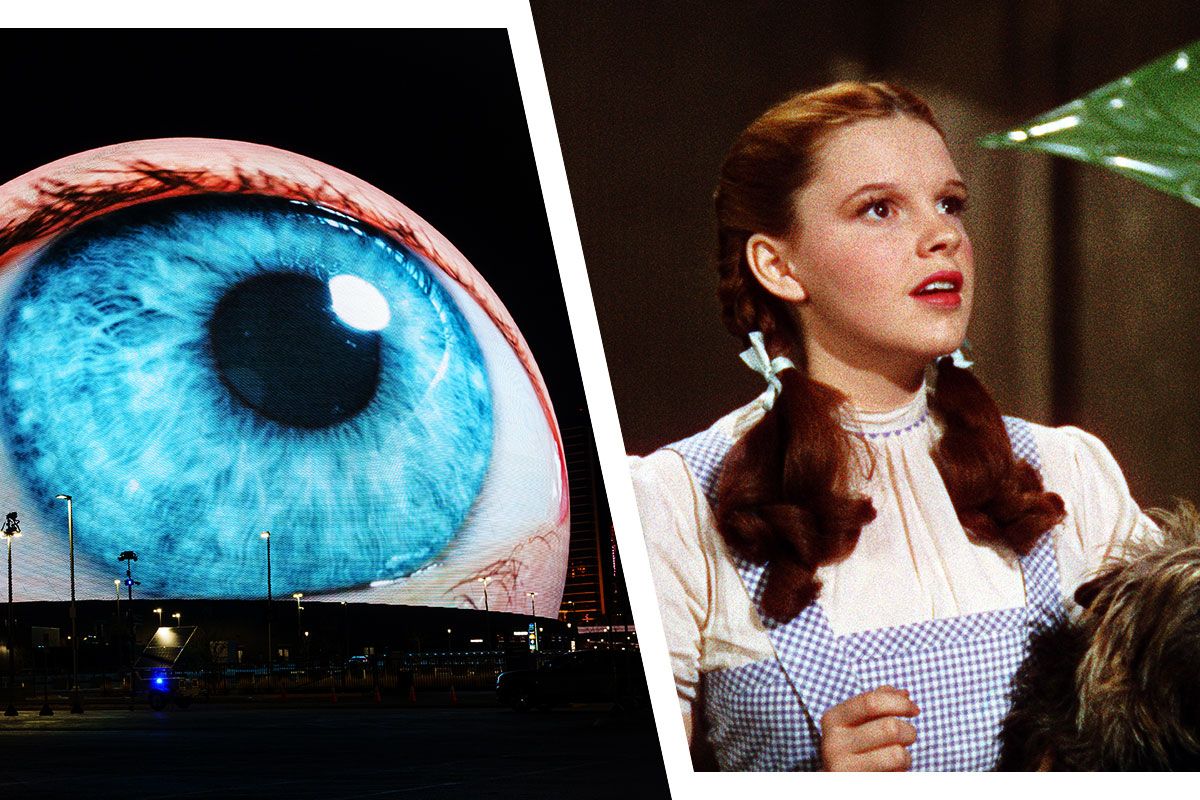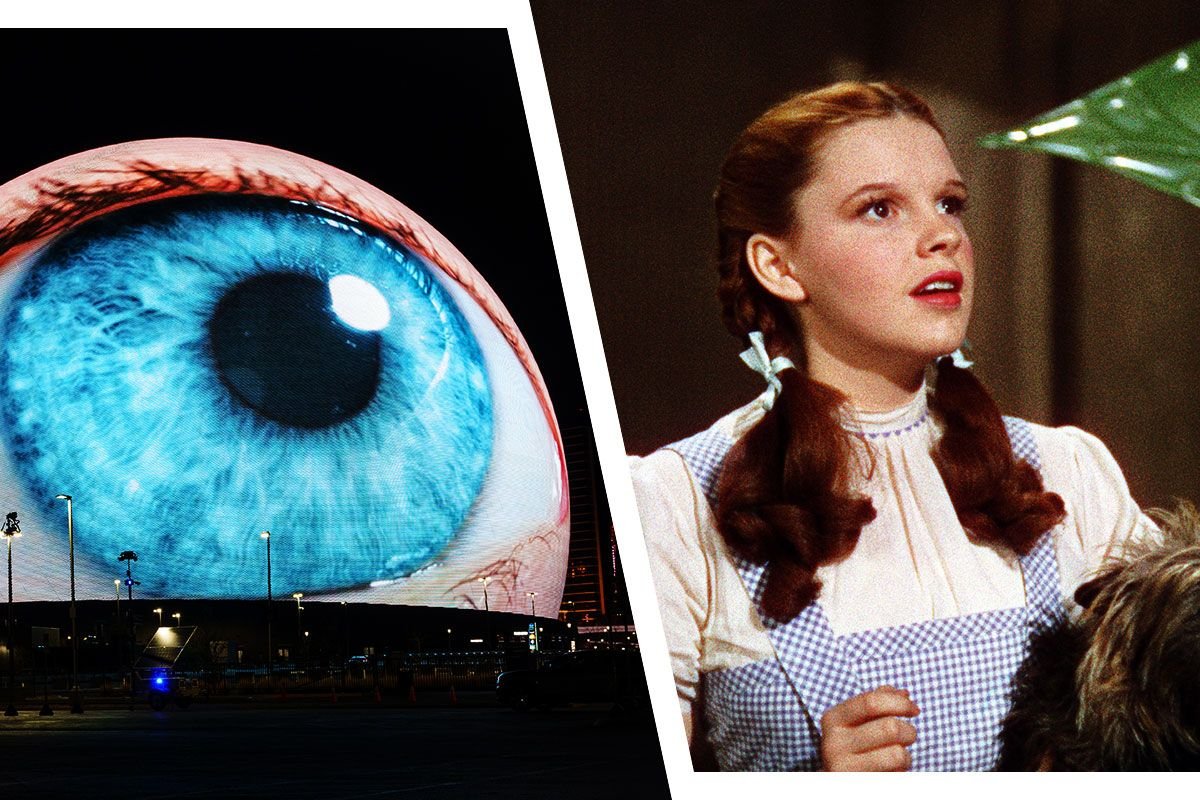
How did you first see The Wizard of Oz? A well-worn VHS tape, a DVD? Maybe you initially saw Victor Fleming’s 1939 film at a local movie theater doing a repertory showing early in the morning. For most people alive now, the movie theater was probably not the primary vehicle through which people watched the beloved L. Frank Baum adaptation. Starting on August 28, however, The Wizard of Oz will begin screening at the Sphere — the giant, well, spherical venue in Las Vegas — allowing viewers to not just see the film on “the big screen” but a screen so large that it makes Imax look like the back of an airplane seat.
If the prospect of seeing an iconic classic on the biggest LED screen in the world feels as though it’s too good to be true, well, you may be onto something. The Wizard of Oz can’t be projected as is onto the Sphere’s, um, sphere without significant amendments to frame and resolution. The “team behind the Sphere,” along with Google Cloud, Warner Bros. Discovery, and a creative studio called Magnopus (founded by the guys who did VFX for Hugo), used generative AI to enhance the original film for this new audience, Variety announced in April.
How much AI in The Wizard of Oz is too much AI? Per Google, AI was used to up the resolution to 16K, extend the edges of the frame, and add performances from characters who would not normally be in the frame. Turner Classic Movies host Ben Mankiewicz watches as VFX editors show him how they built out a whole new Uncle Henry to appear in a scene in which he’s otherwise out of sight in the July 27 episode of CBS News Sunday Morning. In fact, many scenes are built out to feature several characters in frame. Google employed “innovative storytelling techniques that allow multiple characters to remain onscreen even when traditional editing would have dictated cuts”; this “enhances the audience’s immersion, making them feel like they were part of the epic journey.”
Though The Wizard of Oz at the Sphere was always billed as a “reimagining” — the new version, for instance, runs about 20 minutes shorter, maybe because it doesn’t lose all that time cutting back and forth between characters — waves of anger and annoyance spread across X and Reddit regarding the butchering of an otherwise-undeniable classic. While the environments are outpainted with traditional (and seemingly human) VFX, the Sphere’s Wizard of Oz exposes increasing fears about AI in film. People are also irritated with Mankiewicz, who has long been an ambassador of classic film during his tenure at TCM, for doing the CBS segment in the first place. Mankiewicz has been arguing with people on X, insisting that while AI fears are legitimate, all that’s happening with this new version “is extending performances to fit a large screen — completing work Fleming and [producer Mervyn] LeRoy would have if it had been possible.” He went on to add that exposing audiences to classic film is good for the genre on the whole. People who are wowed by The Wizard of Oz at the Sphere may go on to watch, say, Citizen Kane. But is The Wizard of Oz at the Sphere a “classic film”? Or is it — with its enhancements and expansions and manipulations — something else entirely?
Those arguing that this is a special version of the movie that exists only in one specific and spherical context are right, but so are impending fears around AI manipulation in cinema and that an undeniable classic has to be made better. The Wizard of Oz isn’t a good movie because it is perfect but because the vision and detail onscreen are undeniable. That you can’t see beyond the frame in Fleming’s original is not the mark of any kind of failure. Instead, it requires a little imagination to push beyond what can be seen.
Related

